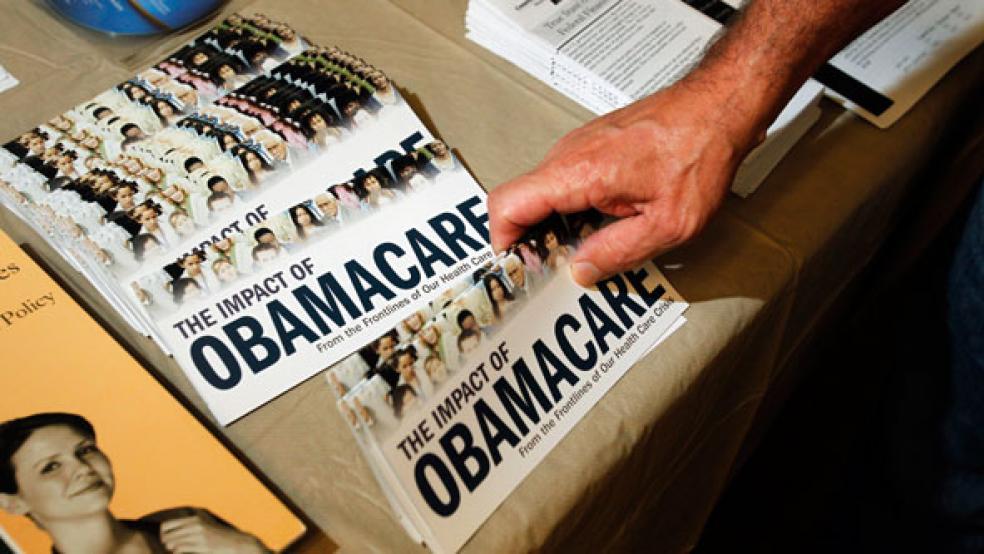One bright spot in the midst of the dismal Obamacare enrollment numbers released by the Health and Human Services Department is the success of some state exchanges.
Fourteen states and the District of Columbia chose to bypass the federal exchange by forming their own health enrollment plans. They received grants from the federal government to help pay for the implementation, and were free to hire any firm they wished to build the actual exchange.
Related: If Obama Keeps His Promise, Premiums Could Go Sky High
California, which hired Accenture to oversee construction of its exchange, was able to enroll 35,364 people in the first month of Obamacare, about one-third of total national enrollments. Officials there said that an additional 29,000 people have enrolled since that time and that they were confident the state would be able to meet its goal of enrolling 500,000 to 700,000 people by the end of March.
New York also had success with its CSC-built exchange. According to HHS, the state enrolled 16,404 people. Washington State was third, enrolling 7,091 people.
Politics played a roll in the success of these state-built exchanges. All of these state leaders were willing to take some of the burden for the creating the exchanges off of the federal government, according to Dan Mendelson, CEO of Avalere Health. Exchanges in states with Republican leadership have been forced to go to the federal exchange, where the list of problems grows daily.
“Because most of the systems work pretty well, the states themselves have been able to message aggressively about signing up,” he said. “California is a great example. It’s partly because the system works. It’s partly because the government and legislature are messaging very effectively.”
Mendelson said that states also benefitted from an easier procurement and technological process than the federal government. Those exchanges only have to offer the plans specified by the state insurance regulators, thus simplifying programming. The federal exchange had to work for multiple insurance plans.
“The state IT infrastructure is simpler,” he said. “They are pulling from fewer databases…and it’s more manageable in scale.”
Related Link: How Democrats Could Kill Obamacare
Sarah Dash, a member of the research faculty at Georgetown University's Health Policy Institute, added that the federal government took a chance by contracting one contractor -- CGI Federal Inc. – and when that contractor failed, it doomed the federal exchange.
“There’s the obvious element if you put all your eggs in a basket and it goes great, that’s good. If it doesn’t, then you’re in trouble,” she said. “The IT on the federal exchange just didn’t work. It didn’t matter how good your policy decision or outreach was.”
Both Mendelson and Dash said states were more successful because they were able to sell Obamacare to a smaller audience. According to Dash, one of the primary challenges with the new health law is convincing people to sign up. People don’t balk when they have to buy home or car insurance. Health insurance is different.
“Health care is so personal. No one wants to think that they might get sick or that something might happen to them or their family,” she said.
One of the biggest challenges that emerged in the month and a half since Obamacare launched is educating consumers, many of whom have never had health care, on how it works. Dash said that this targeting advertising also allowed states to better prepare residents to make health care choices.
Related: 4 Things the White House Still Hasn’t Told Us about Obamacare
“It is really hard to understand. People don’t understand risk, how much they have to pay if something happens,” she said. “There’s a lot of the element of close your eyes and point.”
Mendelson added that many consumers at the federal exchange are surprised with just how much health plans cost, experiencing sticker shock when presented with options. At the state level, leaders were able to soften the financial blow in advance, he said.
“This is a large purchase for most people,” he said. “Even if the premium is really low, they are going to be face with a high deductible and high out of pocket costs.”
According to Dash, scaling the success of the state exchanges to the federal level would be almost impossible, given that the state exchanges were built with different technology and with the needs of its citizens in mind. She said she remained optimistic that the federal exchange could be fixed.
“It’s so early in the game,” she said. “It’s been an incredibly rough start, but it’s kind of a marathon, not a sprint.” -
Twitter: @davidcfrancis
Top Reads from The Fiscal Times:





